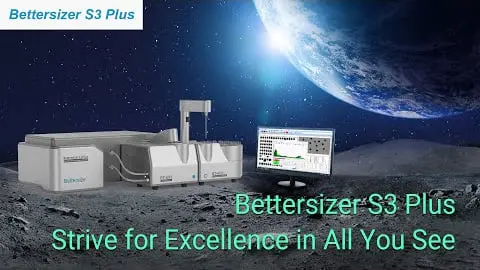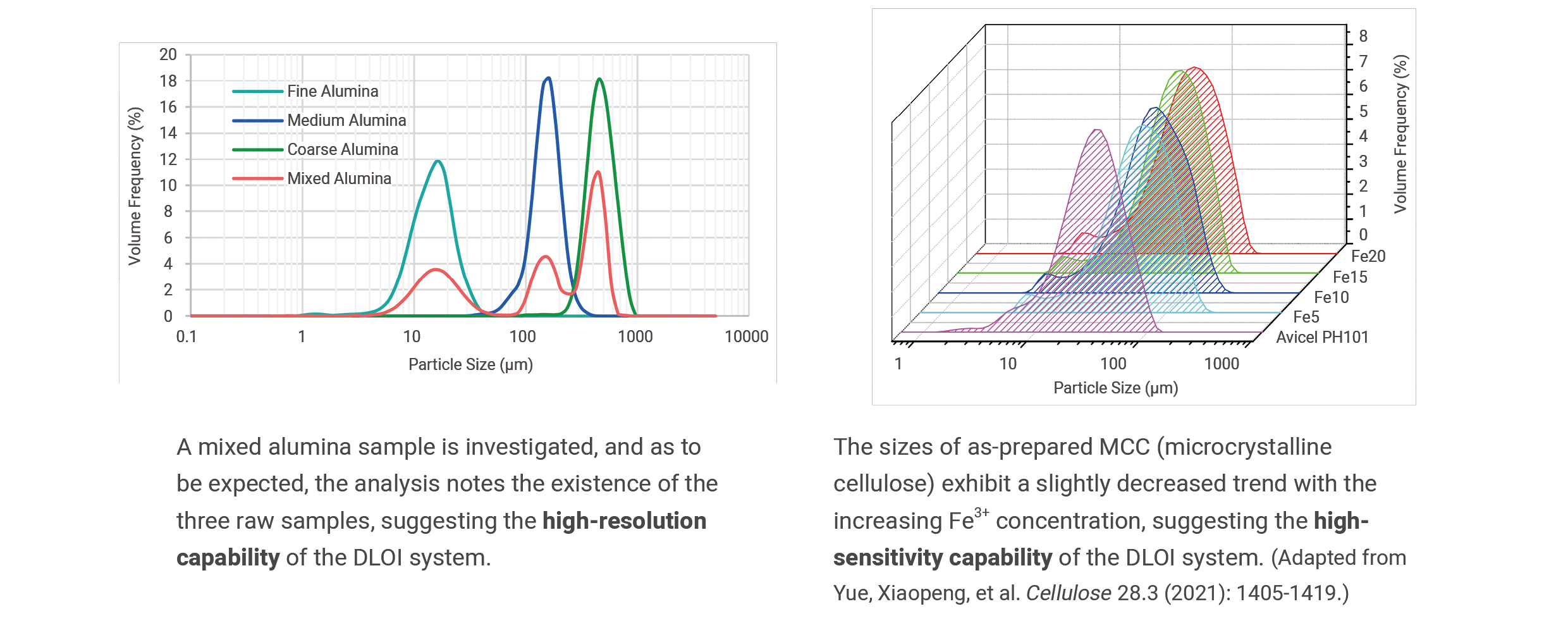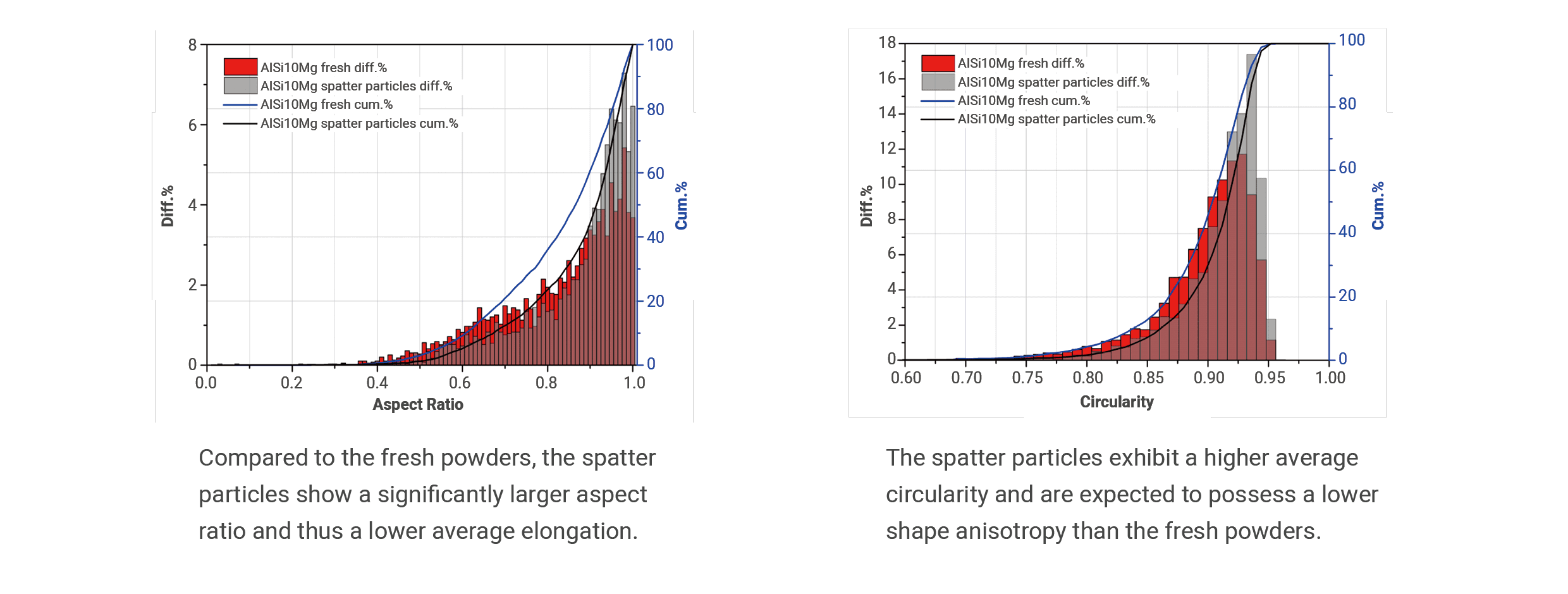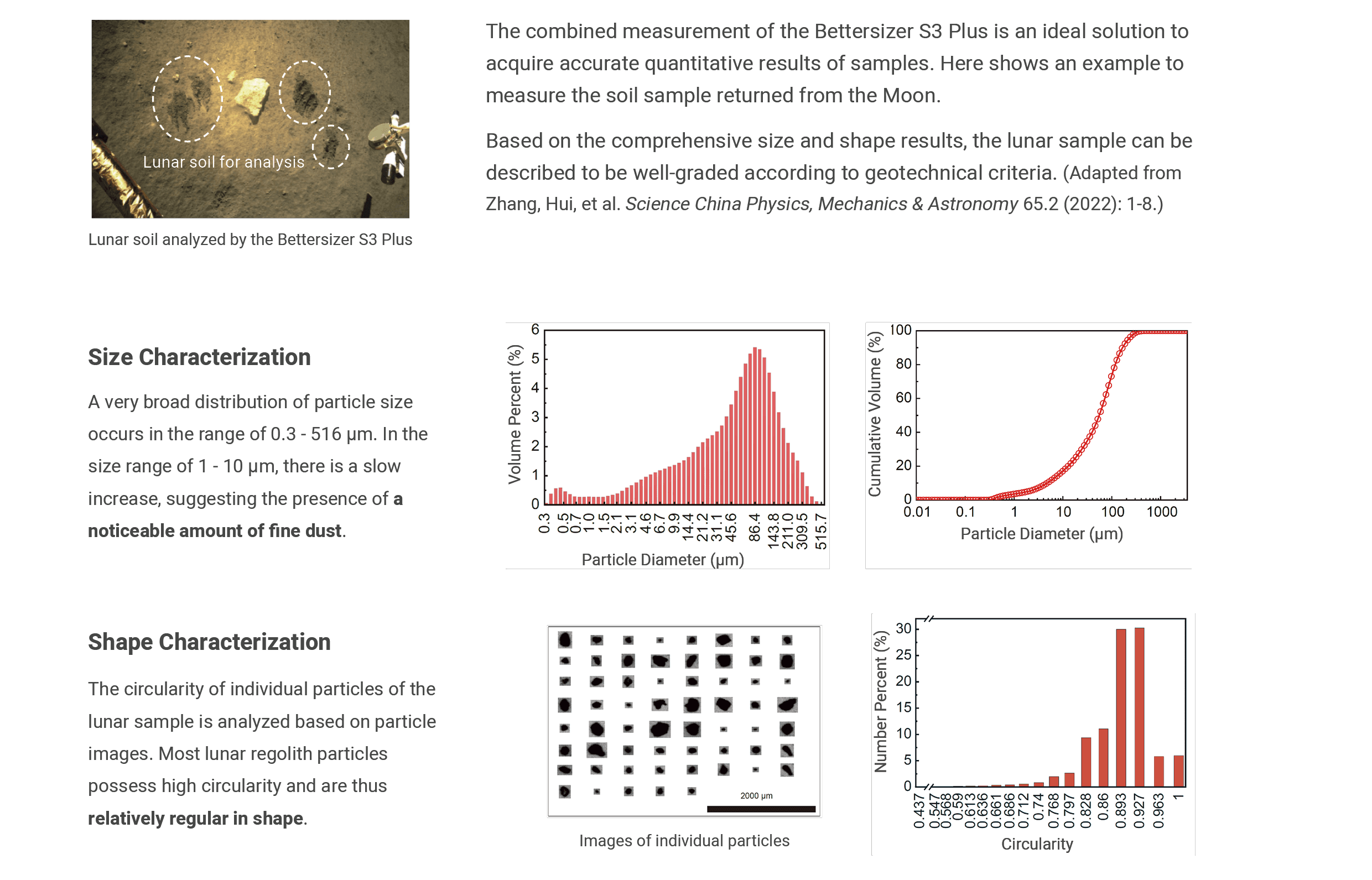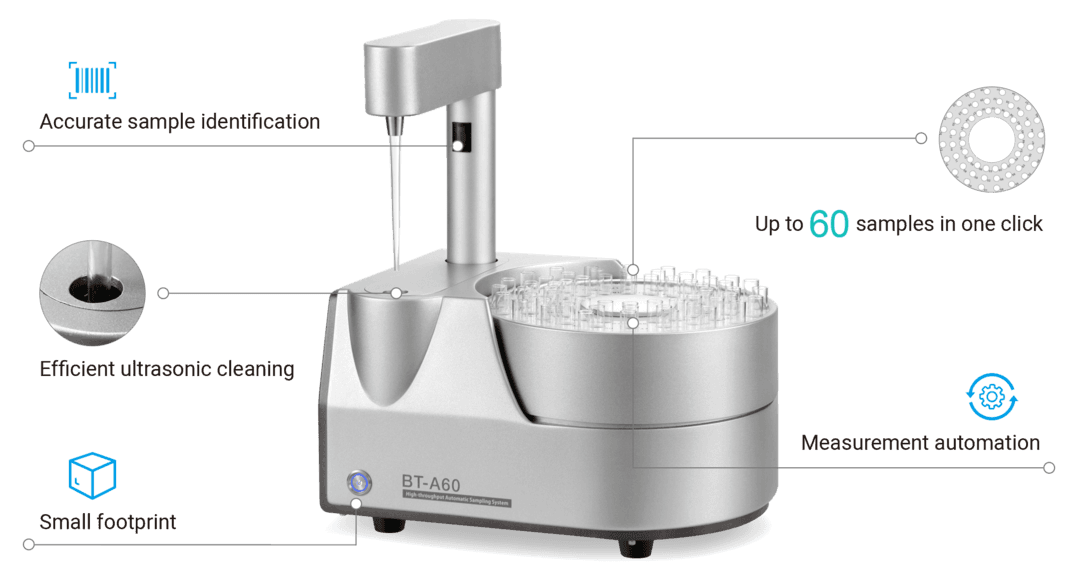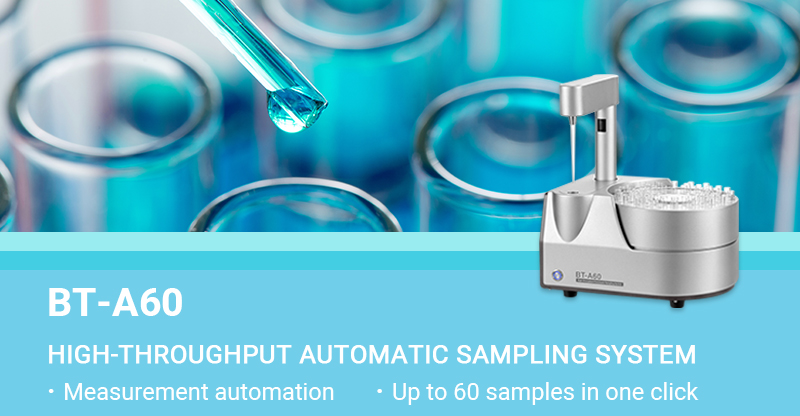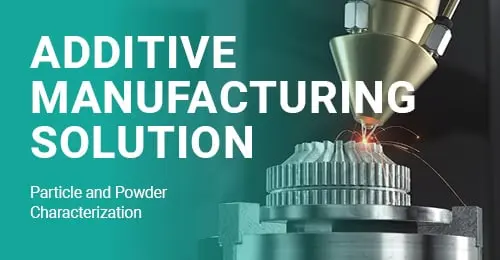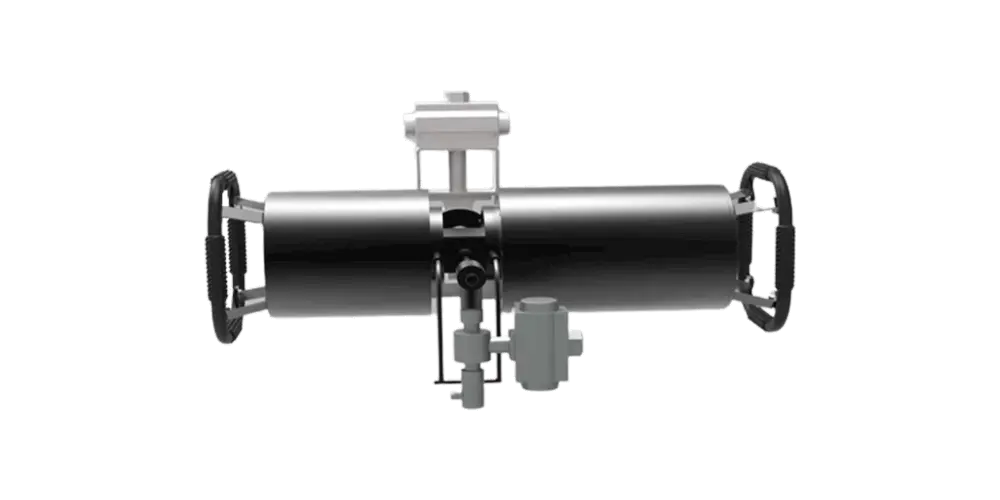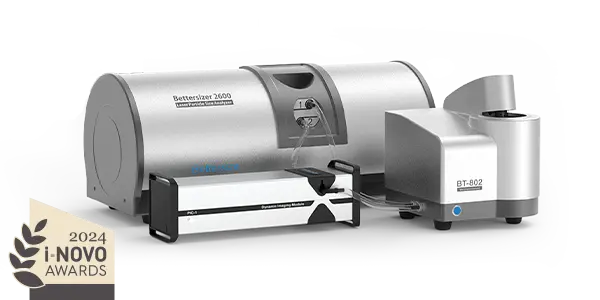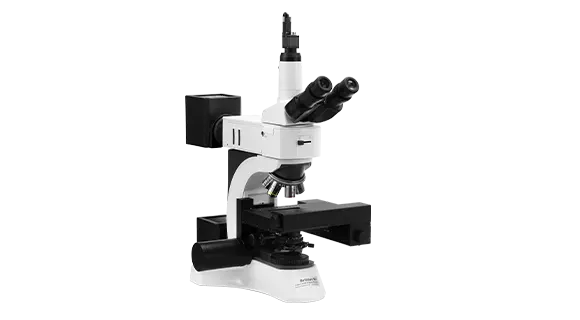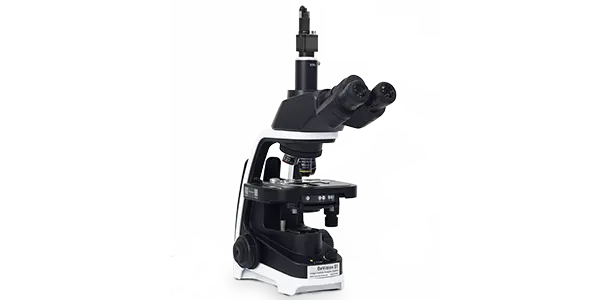Bettersizer S3 Plus
El Bettersizer S3 Plus combina la difracción láser y el análisis dinámico de imágenes en un solo instrumento. Puede medir el tamaño y la forma de partículas de 0,01 μm a 3500 μm. Su excepcional sensibilidad, tanto para partículas ultrafinas como para partículas de gran tamaño, y su insuperable resolución, lo convierten en el analizador de tamaño y forma más potente para los investigadores entusiastas que llevan a cabo investigaciones científicas de alto nivel.
Características y ventajas
- ● El rango de medición es de 0,01 - 3.500μm (sistema láser), 2 - 3.500μm (sistema de imagen).
- ● Combinación de difracción láser y análisis dinámico de imágenes en un solo instrumento, obteniendo resultados de tamaño y forma simultáneamente.
- ● El sistema patentado DLOI (Dual Lenses & Oblique Incidence) permite medir partículas ultrafinas de hasta 0,01 um
- ● La tecnología de imagen de doble cámara puede mostrar imágenes de partículas en tiempo real y detectar partículas de gran tamaño de hasta 3500 um
- ● La medición del índice de refracción determina el índice de refracción de muestras desconocidas y mejora la fiabilidad de los resultados.
- ● Conformidad con 21 CFR Parte 11, ISO 13320, USP <429>, CE
Vídeo
How to Install and Operate Bettersizer S3 Plus 
Bettersizer S3 Plus | Strive for Excellence in All You See 
BT-A60 Autosampler | Demo 
Demo of Bettersizer S3 Plus 2-In-1 Particle Size and Shape Analyzer 
Fundamentals of Bettersizer S3 Plus 2-In-1 Particle Size and Shape Analyzer 
Bettersizer S3 Plus | Particle Size and Shape Analyzer 
Bettersizer S3 Plus Overview | Strive for Excellence in All You See 
Visión general
Características
Rendimiento
Tecnología
Especificación
Accesorio
1. Descripción general del analizador de tamaño y forma de partículas Bettersizer S3 Plus
El Bettersizer S3 Plus es un analizador de tamaño y forma de partículas por difracción láser equipado con dos cámaras CCD de alta velocidad (aumento de 0,5X y 10X) para capturar imágenes de la muestra que se está midiendo. Durante la medición, las partículas dispersas en el medio elegido se bombean a través de dos celdas de muestra. En la primera, la luz láser de onda corta (532 nm) ilumina las partículas y se dispersa. Los 96 detectores detectan señales ópticas en un rango angular de 0,02° - 165°. Las cámaras CCD toman continuamente imágenes de las partículas a través de la segunda célula de muestra para proporcionar información sobre la forma en el rango de 2 a 3500 µm.
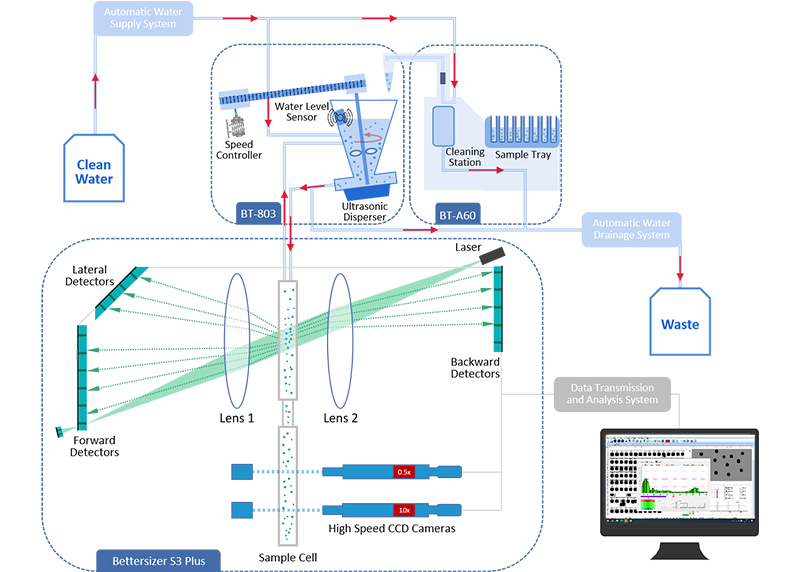
2. Sistema patentado DLOI (Dual Lenses Oblique Incidence): Difracción láser
Características y ventajas:
- Mide partículas ultrafinas con precisión gracias al amplio rango angular (0,02 - 165°) con 96 detectores.
- Sistema óptico robusto con una resolución superior gracias al diseño de doble lente
- Sistema láser único de onda corta (532 nm) que proporciona un espectro de dispersión continuo con una longitud de onda constante
- Cero necesidad de tiempo de estabilización y precalentamiento con una fuente de luz de estado sólido


3. Sistema de doble cámara: Análisis dinámico deimágenes
El análisis dinámico de imágenes puede reforzar su comprensión de los materiales con la información exhaustiva de forma o morfológica que es independiente de la difracción láser. Las partículas individuales con propiedades geométricas específicas, como aglomerados, partículas trituradas y partículas extrañas, pueden rastrearse eficazmente mediante el sistema de doble cámara.
Características y ventajas:
- Cámaras de 0,5x y 10x - fotografían una gama de tamaños de partículas extremadamente amplia
- Luces estroboscópicas de alta velocidad - capturan hasta 10.000 imágenes de partículas en 60 segundos, ofreciendo resultados de forma auténtica
- Adecuado para medir muestras heterogéneas con propiedades ópticas desconocidas
El Bettersizer S3 Plus integra la difracción láser y el análisis dinámico de imágenes en un solo instrumento para caracterizar simultáneamente el tamaño de las partículas, su distribución y su forma en un amplio rango dinámico. Trabajando en tándem, los usuarios pueden obtener una comprensión más profunda del comportamiento del material para acelerar el proceso de resolución de problemas y el proceso de desarrollo de métodos.
- Sistema DLOI - mide con precisión partículas ultrafinas de hasta 0,01 μm.
- Sistema de imagen de doble cámara - detecta eficazmente partículas de gran tamaño de hasta 3.500 μm
- Sistema 2 en 1 - obtiene simultáneamente resultados del tamaño y la forma de las partículas
- Rápido tiempo de obtención de resultados - genera resultados rápidamente en 10 segundos
5. Aplicaciones
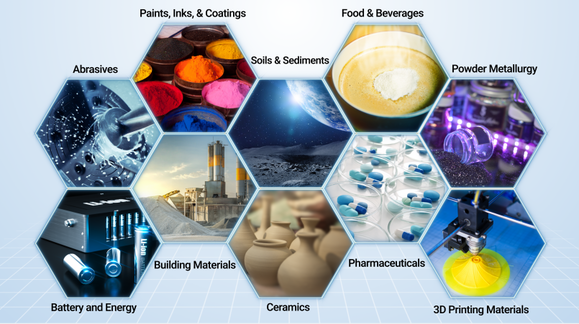

Citations
- Bettersizer 2600
Functional redundancy as an indicator for evaluating functional diversity of macrobenthos under the mussel raft farm near Gouqi Island
DOI: 10.1016/j.aquaculture.2023.740024 Read ArticleZhejiang Ocean University | 2024Biological traits analysis (BTA) helps to evaluate the effects of different environmental variables on the traits-based functional composition of macrobenthos. However, research on functional traits of macrobenthos under mussel farming is limited. We investigated the spatial and temporal response of the benthic system in terms of taxonomic and functional diversity to environmental variables of farming and natural stressors resulting from suspended mussel farming near Gouqi Island of eastern China Sea. The functional traits of macrobenthic assemblages under mussel farming were characterized by “medium adult body size”, “vermiform body form”, “high flexibility”, “infauna”, “semi-motile”, “gonochoristic”, “surface deposit-feeders”, “carnivores”, “semi-motile burrowers”, and “tube-dwellers”. Functional redundancy was stable in response to mussel farming stresses among seasons, whereas species diversity showed efficient to evaluate natural variables. Functional diversity was significantly affected by farming stressors rather than natural variables, Further analysis using multivariate methods together with continuous monitoring were highlighted to evaluate the impacts of mussel farming. Our results reinforce the importance of macrobenthic species and functional traits analysis to evaluate human stresses driven impacts in offshore ecosystems. By analysing the environmental variables with different sources, independently, we concluded the main effects of human pressures on macrobenthic community. Such distinction could be particularly effective to isolate variable environmental descriptors and evaluate their effects on functional diversity, making the current approach promising for the evaluation of ecological effects of anthropogenic stressors in aquaculture areas. - Bettersizer 2600
Degradation characteristics and utilization strategies of a covalent bonded resin-based solid amine during capturing CO2 from flue gas
DOI: 10.1016/j.seppur.2023.125621 Read ArticleChina University of Petroleum | 2024In this study, various types of degradation as well as attrition which are possibly encountered in a circulating fluidized bed temperature swing adsorption (CFB-TSA) process, were conducted experimentally to evaluate the stability of a resin-based solid amine sorbent. Other characterizations methods, such as elemental analysis (EA), Fourier transform infrared spectroscopy (FTIR) etc. were applied to further reveal the degradation mechanisms. The results showed that thermal degradation occurs from 140–160 °C due to the decomposition of amine group. The CO2-induced degradation occurs from a higher temperature of 160–180 °C accompanied by the production of urea. Hydrothermal stability is good below 130 °C, but the ionic impurities in steam crystalized on particle surface can accelerate the degradation. Oxidative degradation is the most harmful, which starts at a lower temperature of 70–80 °C with the formation of aldehyde. The existence of H2O in atmosphere can alleviate the oxidative and CO2-induced degradations. The employed sorbent has a very low attrition index of 0.05, which is 1–2 orders lower than typical commercial fluidized bed catalysts. Based on the results of stability evaluation, some design suggestions for proper utilization of this sorbent or other similar resin-based sorbents have been provided in an industrial CFB-TSA process.
- Bettersizer 2600
De-branching of starch molecules enhanced the complexation with chitosan and its potential utilization for delivering hydrophobic compounds
DOI: 10.1016/j.foodhyd.2023.109498 Read ArticleShihezi University | 2024The current study aimed to prepare the complexes between debranched-waxy corn starch and chitosan polymers (DBS-CS), and then investigated their corresponding structural characteristics, rheological property and potent application in Pickering emulsion. The results indicated that the existence of chitosan significantly inhibited starch short-range molecular rearrangement for all DBS-CS samples, which was manipulated by both debranching treatment and chitosan content. Interestingly, this is the first study to reveal that the outstanding peak at 1.8 ppm in 1H NMR spectrum for sample DBS-CS was gradually shifted towards a lower-field region following an increased chitosan content. Moreover, the debranching treatment shifted the crystallinity pattern from A-type to B-type and the relative crystallinity of DBS-CS decreased gradually with the increased content of CS. All samples had a pseudoplastic fluid and shear-thinning behavior with an enhanced shear resistance following the complexation. The DBS-CS was applied in a Pickering emulsion for showing a greater emulsifying stability and a lower gel strength than native NS-CS prepared emulsion. Importantly, the encapsulation ability of curcumin in the DBS-CS emulsion was significantly improved, followed by an increase of 15.45% for its corresponding bioavailability compared to the control. Therefore, this study might highlight a potential carrier for delivering the bioactive substances in a green pattern. - Bettersizer 2600
Heat-induced aggregation behavior of wheat gluten after adding citrus pectin with different esterification degree
DOI: 10.1016/j.foodhyd.2023.109420 Read ArticleGansu Agricultural University | 2024Wheat gluten aggregation during heat treatment is beneficial to the final quality of gluten-based products. Exogenous pectin can affect gluten aggregation. However, the effect of pectin with different degrees of esterification on the heat-induced aggregation behavior of gluten and its possible mechanism are still unclear. Thus, the heat-induced aggregation behavior of gluten after adding pectin with different esterification degree was studied in this study. When the temperature was raised from 25 °C to 95 °C, pectin affected gluten aggregation and was related to the degree of esterification. Specifically, the results of rheological properties and particle size indicated that low-ester pectin improved the viscoelasticity of gluten and promoted gluten aggregation. Thermal properties revealed that enthalpy of gluten added with low-ester pectin (37%) increased from 92.96 J/g to 95.40 J/g during heating process. Structurally, the fluorescence intensity and surface hydrophobicity of gluten added with low-ester pectin (37%) were lower than those added with high-ester pectin (73%). In addition, low-ester pectin (37%) significantly increased the disulfide bond content (from 15.31 μmol/g to 18.06 μmol/g) and maintained β-sheet content of gluten compared with gluten alone at 95 °C, indicating that low-ester pectin was more likely to induce gluten aggregation. However, scanning electron microscope showed that the gluten added with low-ester pectin (46%) exhibited a denser network structure at 95 °C than that added with low-ester pectin (37%). These results will provide a theoretical base for the regulation of gluten aggregation and the quality of gluten-based products by pectin with different esterification degree.
- 1
- 2
- 3
- 4
- 5
- 6
- 84
Recursos seleccionados
Testimonios


Analizador granulométrico relacionado
-
Bettersizer ST
One-stop Particle Size Analyzer
Dispersion type: Wet
Measurement range: 0.1 - 1,000µm
Repeatability: ≤1% variation
-
BT-Online1
Online Particle Size Analyzer
Dispersion type: Dry
Measurement range: 0.1 - 1,000μm
Accuracy: ≤1% (D50 of certified reference material)
-
Bettersizer 2600
Laser Diffraction Particle Size Analyzer
Measurement range: 0.02 - 2,600μm (Wet dispersion)
Measurement range: 0.1 - 2,600μm (Dry dispersion)
Measurement range: 2 - 3,500μm (Dynamic imaging)
-
BeVision M1
Automated Static Image Analyzer
Dispersion type: Dry
Measurement range: 0.3 - 10,000 μm
Technology: Static Image Analysis
-
BeVision D2
Dynamic Image Analyzer
Dispersion type: Dry
Measurement range: 30 - 10,000μm
Technology: Dynamic Image Analysis
-
BeVision S1
Classical and Versatile Static Image Analyzer
Dispersion type: Dry & Wet
Measurement range: 0.3 - 4,500 µm
Technology: Static Image Analysis
-
BeScan Lab
Stability Analyzer
Particle size ranges from 10 nm to 1 mm
Volume fraction up to 95%
Compliance with ISO/TR 18811, 13097, 21357, 22107






